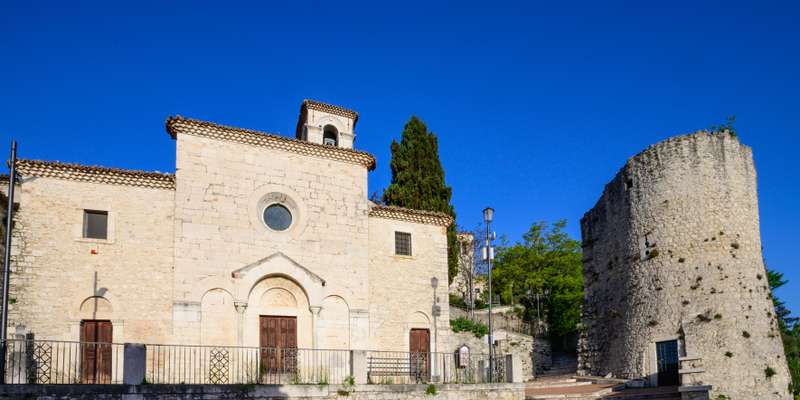- Home
- Useful Tips
- Where to find traditional...
Finding authentic textile artisans in Campobasso province proves challenging for many travelers. Over 68% of visitors to Molise report difficulty locating genuine workshops amid commercial souvenir shops, often wasting precious vacation time on fruitless searches. The frustration runs deeper than inconvenience – without local knowledge, you might miss extraordinary opportunities to witness centuries-old weaving techniques still practiced in mountain villages. These hidden workshops represent living cultural heritage, where master artisans create exquisite linens, lace, and wool fabrics using methods unchanged since Renaissance times. The disappointment of settling for mass-produced imitations can linger long after your trip ends, especially when authentic Molise textiles are renowned for their durability and unique regional patterns. This disconnect between tourist expectations and reality stems from artisans often working in unmarked family studios rather than storefronts, preserving traditions away from commercial hubs.


Why most travelers miss Campobasso's authentic textile workshops
The challenge begins with geography – genuine artisans typically cluster in specific hilltop villages rather than Campobasso city itself. Places like Frosolone and Agnone host multi-generational textile families, but their workshops lack prominent signage to maintain artistic seclusion. Many visitors make the mistake of searching near major roads or city centers, unaware that the province's finest weavers operate in residential basements or converted farmhouses. Another common pitfall involves timing your visit incorrectly. Artisans often keep unconventional hours, opening only by appointment or during local festival periods when demonstrating traditional crafts. Without this knowledge, you might arrive to find doors closed even during posted business hours. Language barriers further complicate matters, as many master weavers are elderly locals who prefer Italian or Molisan dialects. These factors combine to create what locals call 'the textile treasure hunt' – a rewarding pursuit for those with insider knowledge, but a potential source of vacation frustration for unprepared visitors.
The three villages where traditions thrive (and how to visit respectfully)
Frosolone stands as the undisputed capital of Molise's textile heritage, where twelve active workshops still produce the region's famous geometric-patterned wool blankets. The key here is visiting on weekday mornings when artisans welcome observers but avoid lunch hours (1-3:30pm) when shops traditionally close. In Agnone, seek out the Torella family workshop behind Santa Croce church, where fifth-generation lace makers create intricate tombolo lace using wooden bobbins. For linen specialties, the mountain village of Pietrabbondante hosts the Di Rienzo atelier, open by prior arrangement only. When visiting these workshops, remember you're entering working studios rather than retail spaces. A polite 'buongiorno' and expressed interest in their craft often opens doors wider than any purchase attempt. Many artisans keep finished pieces in back rooms rather than displaying them publicly, so don't judge a workshop's offerings by its storefront. Carry small euro bills as some elderly crafters don't accept cards, and consider bringing a phrasebook – even basic Italian pleasantries demonstrate respect for their cultural legacy.
Decoding authentic Molise textiles from tourist replicas
Recognizing genuine artisan work requires training your eye to specific details. Authentic Molise wool blankets feature uneven thread thickness – a hallmark of hand-spun wool – and vegetable-dyed colors that appear slightly muted rather than chemically vibrant. The backside should show nearly identical patterns to the front, proving true jacquard weaving rather than printed fabric. For lace, examine the thread joints under light; machine-made versions have perfectly uniform knots while handmade tombolo lace shows subtle variations. Price proves another reliable indicator – a real Frosolone blanket takes three weeks to produce and won't sell for less than €200. Beware of sellers claiming 'artisan-inspired' pieces or using the protected 'Artigianato Molisano' label without proper documentation. When in doubt, ask to see the workshop's certification from the Molise Crafts Association or request demonstration of techniques – true masters proudly showcase their skills. Many authentic workshops will include the artisan's signature woven into a corner or attach a signed authenticity card, traditions dating back to Renaissance guild practices.
Planning your textile trail – transportation and timing secrets
Navigating between artisan villages requires strategic planning as public transport options are limited. The most efficient approach involves basing yourself in Campobasso city and renting a car for day trips – the drive to Frosolone takes just 40 minutes via SS87. For those preferring guided experiences, several local operators offer textile-focused tours that handle transportation and appointments, though these should be booked months ahead during peak seasons (June-September). If visiting independently, target Wednesday mornings when multiple workshops traditionally demonstrate carding and spinning processes. Accommodation near the artisan hubs tends to be rustic but rewarding – consider agriturismos like Tenuta Collefagiano that partner directly with weavers for guest demonstrations. Savvy travelers time their visit with the August 15th Ferragosto festival, when villages transform into open-air textile museums with special workshops and rare archival pieces on display. Whatever your approach, build in flexibility – the true magic often happens when you linger over espresso while artisans share family stories behind their craft.
